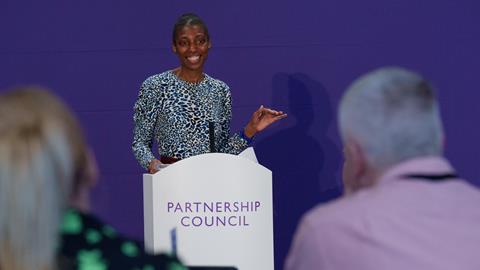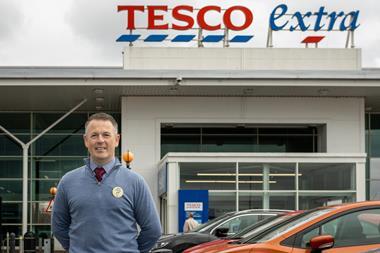You’d forgive Sharon White for hoping this week is quieter than the last one. John Lewis’s chairman is certainly starting it in a stronger position.
On 10 May, in what was arguably the most closely watched of the retailer’s biannual partnership council meetings of recent years, White won the backing of the mutual’s 61-strong partnership council in her strategy to turn around the 159-year-old retailer.
White faced two votes from the 55 council members who entered the ballot. The first vote concerned the retailer’s performance over the past year. Unsurprisingly, this did not receive support from members, given the £234m loss and failure to pay a partnership bonus. The second vote, concerning chairman White, was more surprising. There was a vote of confidence in her “to progress the partnership in relation to its purpose, principles and rules”.
It was an unexpectedly postive outcome for White, who has been the target of immense criticism over potential plans to end the mutual’s 100% employee ownership by selling a stake to an external investor.
The numbers, published by JLP late on Friday evening, show it wasn’t even close. A total of 37 agreed to support White’s leadership, and a further five strongly so. Tellingly, of those who didn’t back White’s strategy, only one strongly disagreed, while zero abstained. So what’s to like about White’s plan?
As a former civil servant with no experience leading a retailer, the suitability of White’s appointment has come under scrutiny.
But there’s also an understanding that she’s been dealt a tough hand. Not only has she faced a once-in-a-lifetime pandemic, but she’s also had to deal with a cost of living crisis and rampant inflation – which has, in her own words, “hit like a hurricane”.
JLP’s financial situation is, to some extent, a reflection of these tough circumstances. Like many retailers, it’s suffering from falling margins. That’s compounded the difficulties with its online system, as well as the £350m in loans and maturing bonds that need to be repaid by 2025.
White has made no secret of the need to raise more cash and cut costs. She believes a change in direction is the only way to achieve that aim. White aims for 40% of the partnership’s profits to come from outside its core businesses of food and retail by 2030.
The plans include a £500m joint venture with Abrdn, announced in December. Under the plans, the partnership will build up to 1,000 homes at three existing sites in Bromley, West Ealing and Reading. The first of up to 10,000 new homes to rent is planned by the start of the next decade.
According to a source, the model is popular among partners. It could enable the business to access much-needed capital, without a risk to its hallowed mutual status.
Partners are also likely to have been buoyed by the performance of its financial services business. Over the past year, the number of customers enrolled on its partnership credit card grew to 600,000, while income grew 22% on the year before. The business has relaunched its pet insurance business and White plans to trial a John Lewis junior ISA later this year.
Still, that leaves the question of what happens to retail.
Retail analyst Neil Stead, who spent seven years as Waitrose customer loyalty manager before leaving in 2021, is the latest former staffer to accuse the retailer of losing its “core ethos” of focusing on customers. He told The Times today: “Throughout my time within the John Lewis Partnership, I always worked with a customer-first mentality and our partners came a very close second.”
There are signs White is keen to tackle those accusations. Last month, the partnership appointed former Tesco head of loyalty Emily Wells to spearhead the launch of a pan-partnership loyalty scheme in 2024.
That focus was compounded today with the appointment of ad agency Saatchi & Saatchi to lead the development of its marketing campaign.
It’s a sensible move, given that loyalty has become an ever fiercer battleground for retailers, and on this front at least, Waitrose and John Lewis have operated as entirely separate entities. A revamp could also address the complaints surrounding the recent relaunch of MyWaitrose.
Of course, this isn’t going to be a silver bullet – and there is plenty more work to do to boost retail results. The appointment of JLP’s first ever chief executive Nish Kankiwala, who is tasked with improving performance and profitability, is another strategic move on this front.
All in all, White isn’t out of the woods yet. She may have received confidence in her plans, but the partnership council’s rejection of the business’s performance over the past year is a warning shot.
Another test will come in October, when the second of this year’s ’holding to account’ sessions is set to take place. By then, partners will expect to have seen at least some progress in the right direction.




















No comments yet